This man is inspired and not easily scared
Jan Kriska recently completed the 1000 mile Iditasport Extreme event in Alaska in 29 days, 20 hours and 20 minutes and he pulled all his gear in a sled behind him along the way. He attempted the same event in 2017, but did not finish it that year and returned home to North Carolina with severe frostbite instead. Undeterred he returned in 2018 and was first to reach the finish in Nome.
Slowtwitch: Thank you for your time Jan.
Jan Kriska: Thank you for the honor to be on Slowtwitch.
ST: When did you return from Alaska?
Jan: I finished my race on 28th of March and returned home to NC on March 30th. I flew from Nome 3 hours after I crossed the finish line. In Anchorage I missed the plane to NC due to my tardiness. I would have been home essentially the next day.
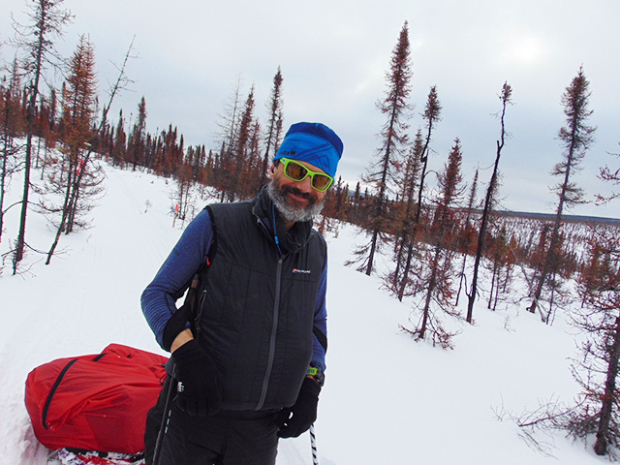
ST: Last year you returned from Alaska with frost bite and I think you avoided that this time.
Jan: This year the temperatures were not as extreme as last year. We had few times -30 F but majority of the time it was hovering between -2 and + 10 F ( -18 and -12 C). We had some temps around 25 F – which is considered super warm. I had superficial frostbites on my cheeks, nose, chin and fingers. It was from extreme wind chills at the end of the race. They however healed quickly. Nothing like last year where we had sustained -35 to -55 F (-48 to -37C) and I then had large frostbite areas on my feet and lost 2 tips of the fingers. I invested in better equipment (sleeping bag and parka), had extra shoes and a more reliable stove.
ST: Is it fair to say that last year you almost died on the snowy trails in Alaska?
Jan: I would not go that far. I did not perceive it that way when I was out there. It may have seemed that way because my GPS tracking was lost (dead batteries) and the frostbite I had acquired. When I emerged from the wilderness everyone was thinking that I was fighting for my life. Yes, I had a slow go due to the new snow and low temperatures. I lost my snowshoes when they slipped off my sled, and my stove stopped working. I was moving forward as in business as usual but it was a little slower. I did not panic or perceived that as an emergency. I did not realize how extensive my frostbite was because of endorphins. In a nutshell -I was not in the state of emergency yet. This year I had few moments where I was more despaired especially during the last 2 days of my journey when I hit blowholes and I got briefly lost. I though if I could not find the markers I might freeze to death.
ST: Did you return this year to deal with unfinished business?
Jan: It was pure hurt pride of last years failure to finish.
ST: What did your family say when you announced the return to the Iditasport Impossible?
Jan: My family and friends were completely against it and tried to discourage me. It took 7 months to heal my feet after the loss of tissue all the way to the bone on both feet, and my last finger amputation was in early October. They felt and probably rightfully so that it is not a good idea to risk it again.
ST: Did you prepare differently this year?
Jan: My physical preparation was essentially nonexistent. I am full time physician and while I was “ recovering “ from my last journey, plus I had opened a brewpub with my wife and friends. I was working two jobs (physician, brewing beer, waiting tables etc). In terms of training I was running some with my Knobjoggers group of friends and did about 30-50 miles a week off-road. I raced the race of truth called Hellgate, a 70-miler in Virginia that I always do in December. I was not much when compared to last year. I definitely invested in new equipment – sleeping bag, parka, stove, thermos etc. Essentially this year I was mainly winging it.
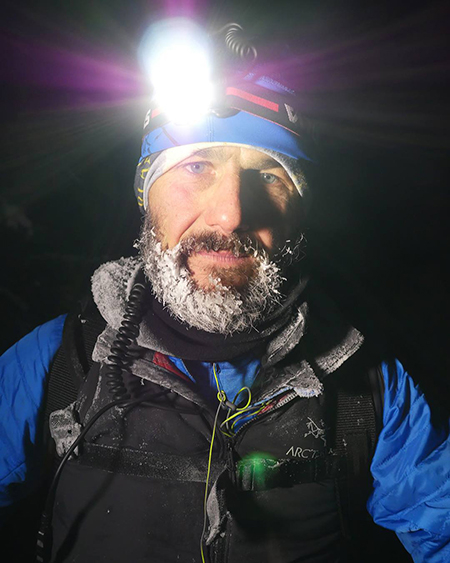
ST: As this unique race started, how many other athletes were at the start?
Jan: There are 2 races that follow Iditarod course and are human powered. What that means is you can go and do the course of Iditarod dog sled race by either going by foot, bike or skis. Original the race was called Iditasport and it disappeared after a few years due to the loss of sponsorship and embezzlement of the funds. Racers wanted to continue the race and they recreated the race and named it as Iditarod Invitational. 3 years ago legendary biker Billy Koitzch resurrected the old Iditasport race and now there are 2 races. The races have different starting point and cross the Alaskan range in a different spot. They start 6 days apart with Iditasport being earlier. There is maybe total of 38 participants in Iditasport and close to 60 in Iditarod Invitational in various distances. For the long distance of 1000 miles there were 3 people on the foot in Iditasport Impossible and 6 in Iditarod Invitational. There were 16 fat bikers that were in the long race in ITI and none in Iditasport. 2 foot racers finished from Iditasport and 2 foot racers in ITI.
ST: Did you feel good?
Jan: Initially I was rusty. I felt beaten after first day. Fresh snow and selfimposed fast pace made me sore. My left calf was swollen. I decided to slow down and continue with my fellow journeyman Jorge Latre-Rufat and Scott Smith. They were strong and miles together we were ticking off the miles quicker. 460 miles into the race I suddenly realized that I ran behind my itinerary and I separated myself from my friends and attempted to finish the race alone. I was feeling stronger as the race progressed. I believe that conservative start help me to warm myself into the race. The last 3-4 days were the hardest. I have still felt good but bad weather and many days on the trail made it challenging.
ST: Describe the conditions.
Jan: We had a lot of new snow that made this race very difficult. I have finished ahead all bikers but two. Normally they would finish several days ahead but we had 22+ days of snow. They most snow in 20 years in Alaska. It is very hard to progress. Conditions were very tough and far from ideal. Tim Hewitt, a legendary 10-time finisher and record holder scratched after 500 miles. It was slow progress and too much snow what he had quoted as a reason for abandonment.
ST: What was the worst you encountered?
Jan: Really the last 2 days of heavy winds and a large accumulation of snow.
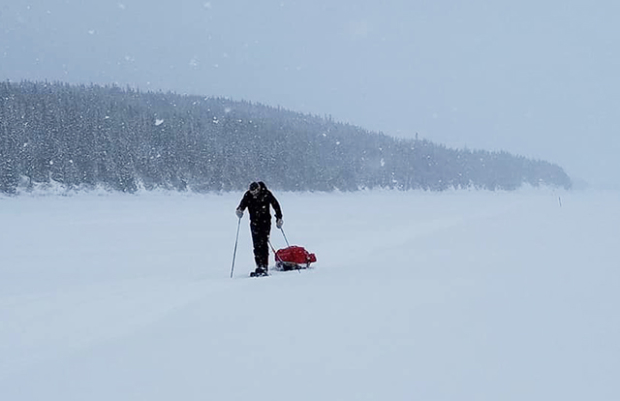
ST: Where did you sleep?
Jan: A third of the time in a cabin, another third I slept in schools and hotels and the other third out in nature.
ST: I think at one point of the race you were part of a rescue mission?
Jan: We reached the village of McGrath and were waiting 2 days for Iditarod trailmakers to work on the trail. As we were about to leave as the race director of Iditarod Invitational (the other race) approached Billy Koitzch the race director of our race to help find and rescue a racer that was lost for 8 hours. Since I am doctor I was called into action. I was given snowmobile and we rode 30 miles into tundra. It was my first snowmobile ride and my first 10 miles were sketchy. We found the abandoned sled and soon we found him not too far from the sled. He was hallucinating from sleep deprivation and hypothermia. It was a rather warm night with only 20 F (-8 C). Mild temperatures and the fact he was moving was his saving grace. If he had stopped moving or the temperatures were colder he would have likely died or suffered from bad frostbite. He had recognized me by name and he rode the snowmobile on the backseat. He recieved infusions and flew back home that same day. He told us that he had lucid moments while he was lost. He came to realization that he may not ever see his parents and his wife. He said last goodbyes to them before we found him. It made me shed some tears.
ST: Is he ok?
Jan: Unscathed.
ST: When you left your companions behind after 460 miles what made you decide to push on alone?
Jan: I had only 30 days off. I needed to go back to work.
Jan: Did you have doubts along the way?
Jan: No. I was frustrated and worried however. New snow, mountains and winds were fierce, relentless and ever increasing over last 4 days. It was to the point that I doubted that I would be able to finish the event if it got any worse. It did get worse but I was able to face the last challenge.
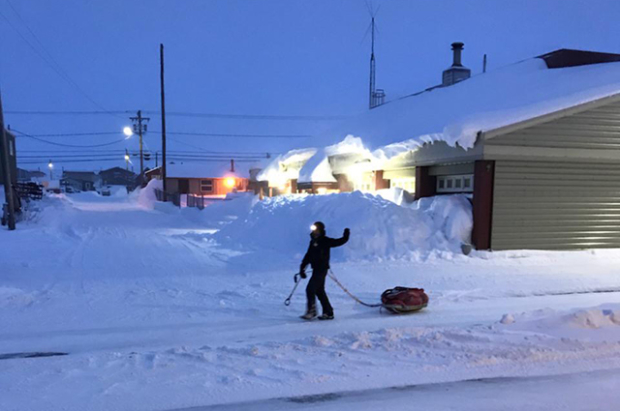
ST: I think when you finally reached Nome after 29 days and 20 hours it was pretty quiet. Did you expect more of a party?
Jan: No. I was hoping that our race director will be there and I was rushing to make it the bar before closing time. The bars in Nome close at 5am. My projected time of arrival was 4am. I encountered new snow and snowdrifts and that slowed me down. I made it finally at 8:20 am – good enough for breakfast but too late for my beer. My Knobjogger (running group) friends had called the Subway restaurant and they grabbed a picture as I walked by. They also got the picture from street cameras. I was not joyous just had a big relief. I ate one omelette and 2 extra hash browns and 2 large orders of pancakes. At 10am they started serving beer so I flushed the breakfast with 2 beers and went to the airport to fly to Anchorage. Alaskan Airlines served beer. I had 2 more on the plane. My finish was anticlimactic non-celebratory. I was too tired after the last stretch of 36 hours straight with 65 miles of hell. That was at the end of 1030 miles.
ST: So what is next?
Jan: I got into the Otillo World Swimrunning Championships in Sweden with my son Matus in September. I am going to do a health mission with WOGO, a women orthopedic outreach team that is replacing knees in Cuba in late April. I have to catch up with brewing at my brewery Thirsty Souls in Mount Airy, NC and catch up on farm work. Shearing sheep, taking care of vineyard. Also my patients need me and I hope they did not abandon me. Long term plans- Absa Cape Epic, Coast To Coast, Swissman extreme, Janosik- Slovak extreme triathlon, Ultra trail Gobi.
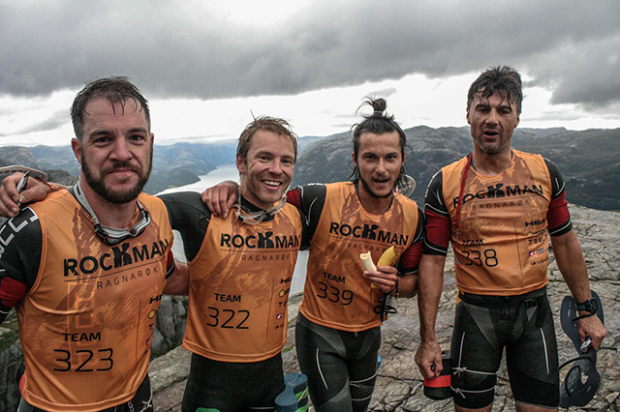
ST: What about rest?
Jan: I do not understand the question.
ST: No chilling or sleeping?
Jan: I am chilling now.



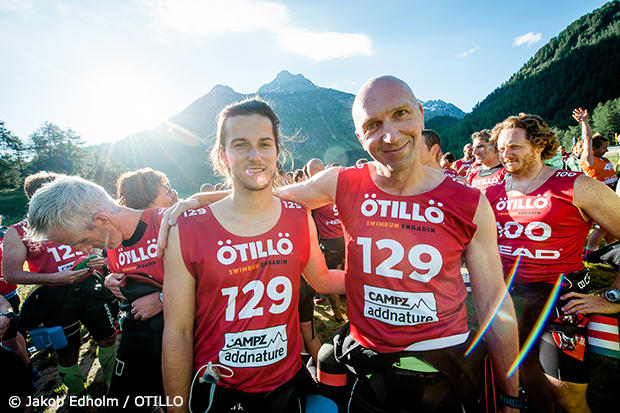
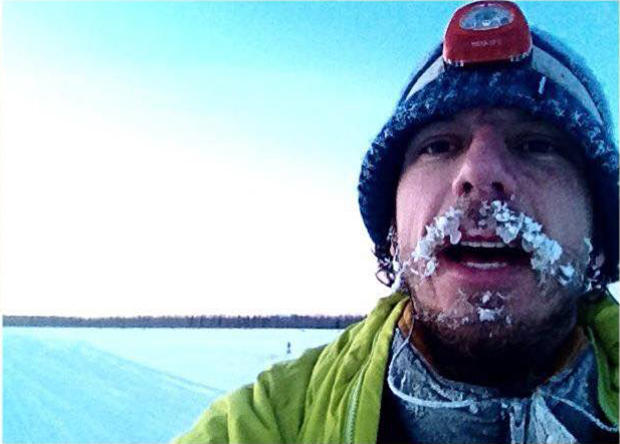
Start the discussion at forum.slowtwitch.com